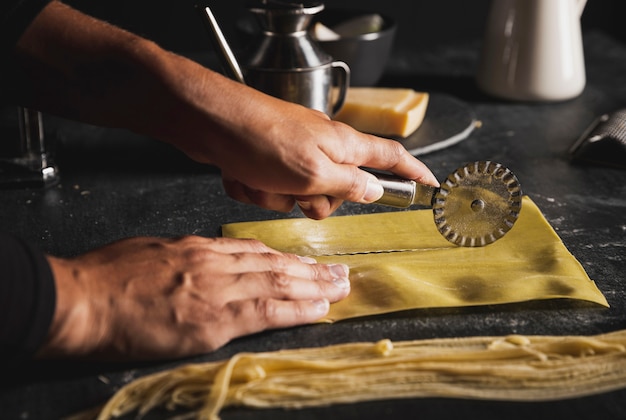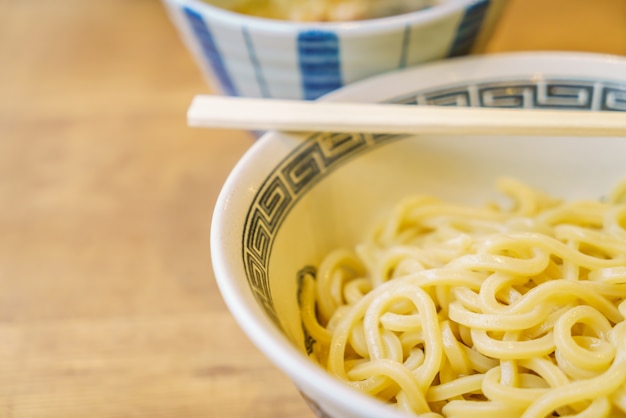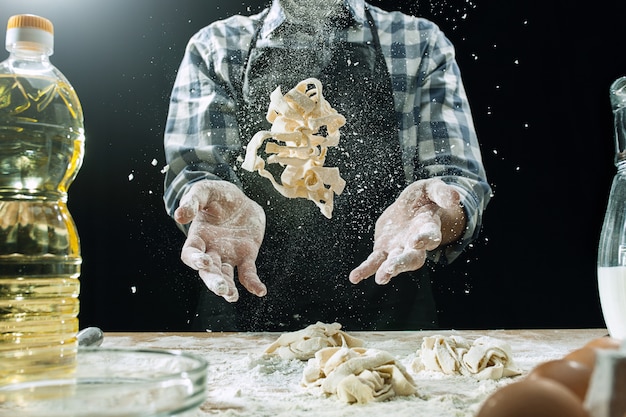As a self-proclaimed pasta enthusiast, I've spent countless hours perfecting the art of cooking the perfect spaghetti. It's a journey that's taken me from experimenting with different brands to mastering the elusive al dente texture. There's nothing quite like a plate of perfectly cooked spaghetti, glistening with sauce and topped with a generous sprinkle of Parmesan cheese. But achieving that perfect bite can be a bit of a culinary puzzle, especially when it comes to cooking time.
I've been there, facing the dreaded mushy spaghetti, the heartbreak of undercooked noodles, and the frustration of trying to decipher the perfect cooking time. But fear not, my fellow pasta lovers, because I'm here to share my hard-earned wisdom on how to achieve the ultimate spaghetti experience every single time. So, grab your pasta pot, a trusty timer, and let's embark on this culinary adventure together!
Part 1: Understanding the Basics

The Science Behind Spaghetti: A Journey from Grain to Plate
Before we delve into the specifics of cooking times, let's take a quick journey into the science behind spaghetti. You see, spaghetti is made from durum wheat semolina, a type of hard wheat that gives it its distinct texture and flavour. Durum wheat is a powerhouse of proteins and starches, and when you cook spaghetti, the starches absorb water and swell, causing the noodles to become tender. This process, known as gelatinization, is what transforms the raw spaghetti into the soft, pliable noodles we enjoy. And it's this process that leads us to the concept of "al dente."
Al Dente: The Holy Grail of Spaghetti Texture
The term "al dente" is an Italian phrase that literally means "to the tooth." It refers to the perfect texture of cooked pasta – firm yet yielding, with a slight resistance to the bite. It's not quite raw, but it's not mushy either. It's that magical point where the pasta retains its flavour and integrity, offering a delightful textural contrast with the sauce.
Why is al dente so crucial? Because it's all about the experience. When you bite into an al dente noodle, it provides a satisfying texture and allows the flavours of your sauce to shine through. It's a beautiful balance of firmness and softness, creating a culinary symphony in your mouth. al dente pasta is the foundation of a great pasta dish, allowing the flavours of the sauce to come alive.
The Importance of Water: The Boiling Vortex
You might think, "It's just pasta and water, right?" But the water you use to cook your spaghetti is actually a crucial element in achieving that perfect al dente texture. The water needs to be vigorously boiling, creating a swirling vortex of bubbling energy. Why? Because the boiling water helps the noodles cook evenly, preventing them from sticking together and ensuring a consistent texture throughout.
Imagine cooking your spaghetti in lukewarm water. The noodles would be unevenly cooked, with some parts soft and others still hard. This is where the boiling water comes in – it creates a uniform heat that cooks the pasta evenly, leading to that perfect al dente texture we all crave.
Part 2: The Art of Timing: Master the Taste Test

The Package Instructions: A Starting Point, Not the End
Alright, let's talk about those pesky package instructions. They're a good starting point, but they're not always the gospel truth. Cooking times can vary depending on factors like the type of pasta, the altitude, and even the size of your pot. For example, some brands of spaghetti might cook faster than others, and if you're using a smaller pot, the noodles might take longer to reach al dente. That's why relying solely on package instructions can lead to a less-than-perfect outcome.
The "Taste Test" Method: My Personal Favourite
My go-to method for perfect spaghetti is the "taste test." It's a simple, foolproof technique that has never let me down. Here's how it works:
- Follow the package instructions as a guideline, but be prepared to adjust the cooking time.
- About a minute before the suggested cooking time, scoop out a few noodles and taste them.
- If the noodles are still too hard, cook them for another 30 seconds and taste again.
- Repeat this process until you reach that perfect al dente texture.
The taste test is a powerful tool because it allows you to personalize the cooking process. It accounts for variations in pasta brands, cooking environments, and even your personal preferences. It's a way to ensure that your spaghetti is cooked precisely to your liking.
Understanding the "Time Variance"
Every pasta brand, every batch, and every pot can be slightly different. That's why relying solely on the package instructions can be misleading. For example, I've noticed that some brands of spaghetti cook slightly faster than others, and sometimes, if I'm using a smaller pot, the noodles may take a bit longer to reach al dente.
The "Pasta Timer" Trick
Now, I know what you're thinking: "What about a pasta timer?" Yes, those handy gadgets can be a lifesaver, but they're not always accurate. They often give an average cooking time, which can be misleading, especially when dealing with variations in pasta brands and cooking conditions. So, while they're a good tool for keeping track of time, don't rely on them solely for determining doneness.
Part 3: Common Mistakes to Avoid: The Pitfalls of Pasta

Cooking perfect spaghetti is about more than just timing. It's about understanding the nuances of the process and avoiding common mistakes that can lead to disappointing results.
Overcrowding the Pot: The "Spaghetti Glop"
One of the most common mistakes people make is overcrowding the pot. When you add too much spaghetti to the water, it creates a sticky, gooey mess. The noodles have less room to move around and cook evenly, leading to uneven texture and a generally unpleasant experience. Think of it as a pasta party with too many guests; it gets crowded and chaotic.
Not Using Enough Water: The "Pasta Soup"
Another crucial mistake is not using enough water. You need enough water to ensure that the noodles have ample space to cook and that the water doesn't become starchy and cloudy. As a general rule, you should use at least 6 cups of water for every pound of pasta.
Not Salting the Water: The "Bland Spaghetti"
Never underestimate the power of salt! It's not just about adding flavour; salt actually helps the pasta cook more evenly and enhances its taste. Always add salt to your boiling water, about 1 tablespoon for every 4 quarts of water. The salt creates a more conducive environment for the pasta to cook and allows it to absorb flavour more effectively.
Draining Too Soon: The "Raw Spaghetti"
Don't drain your spaghetti too soon! Remember, the pasta continues to cook even after you remove it from the heat. To prevent undercooked noodles, it's a good idea to drain your pasta about a minute before it reaches your desired texture. This allows the pasta to finish cooking slightly and achieve that perfect al dente texture.
Part 4: Tips and Tricks for Perfect Pasta: Elevating Your Spaghetti Game
Now that we've covered the basics, let's dive into some tips and tricks to elevate your spaghetti game and create truly exceptional pasta experiences.
The "Cold Water Rinse" Debunked: A Myth Exposed
You've probably heard that rinsing your spaghetti with cold water stops the cooking process and prevents it from sticking together. However, this practice can actually make your pasta taste bland and gummy. It's best to avoid rinsing your spaghetti, unless you're planning on using it in a cold salad. The cold water shocks the pasta, making it lose its flavour and texture.
The "Starch Magic": A Culinary Secret Weapon
The starchy water left in your pot after draining the pasta is actually a valuable ingredient! It helps the sauce cling to the noodles, creating a luscious and flavorful experience. Don't discard it! Reserve a cup or two of the starchy water and add it to your sauce. The starch in the water acts as a natural thickener, helping the sauce to coat the pasta evenly and creating a delicious, creamy texture.
The "extra virgin olive oil" Trick: A Touch of Luxury
A tablespoon or two of extra virgin olive oil added to the boiling water can help prevent the noodles from sticking together. It also adds a subtle flavour to your pasta. The olive oil coats the noodles, creating a barrier that prevents them from sticking to each other.
The "Sauce Consistency" Tip: The Perfect Harmony
The perfect sauce is neither too thin nor too thick. It should coat the spaghetti evenly, clinging to each noodle and creating a luscious, velvety texture. If your sauce is too thin, you can thicken it by adding a tablespoon or two of cornstarch or flour. If it's too thick, add a little more water or broth. Remember, a harmonious balance between the pasta and the sauce is crucial for a successful spaghetti dish.
Part 5: Different Types of Spaghetti: Beyond the Traditional
While we're on the subject of spaghetti, it's worth mentioning that there are actually different types of spaghetti, each with its unique characteristics and culinary applications.
spaghetti alla chitarra: The Flat Noodle
"Spaghetti alla chitarra," known for its square cross-section and flat, ribbon-like shape, offers a firmer bite than traditional spaghetti. It's a bit more rustic in texture and holds up well to rich, flavorful sauces. It's often used in dishes featuring hearty meats and vegetables.
Spaghetti Integrale: The Whole Wheat Delight
For those seeking a healthier option, "spaghetti integrale" is made from whole wheat semolina. It has a slightly nuttier flavour and a more rustic texture than regular spaghetti. It's a great choice for those who want a more substantial pasta that's packed with nutrients.
Spaghetti al Pomodoro: The Classic
Of course, no discussion about spaghetti would be complete without mentioning "spaghetti al pomodoro." This classic Italian dish features a simple yet incredibly delicious tomato sauce. It's the perfect example of how a few simple ingredients can come together to create a truly unforgettable meal. The simplicity of the dish allows the flavour of the tomatoes to shine through, creating a classic and timeless pasta experience.
Part 6: Variations and Creativity: Expanding the Culinary Horizons of Spaghetti
Spaghetti is a versatile pasta that lends itself to countless variations and creative culinary explorations. Let your imagination run wild and discover new flavour combinations and culinary styles.
spaghetti carbonara: The Creamy Dream
Spaghetti carbonara is another beloved Italian dish that showcases the versatility of spaghetti. This creamy, cheesy pasta is made with eggs, pancetta (or bacon), and Parmesan cheese. It's a rich, decadent dish that's sure to satisfy any pasta lover. The creamy sauce and savory pancetta create a symphony of flavour that's both comforting and indulgent.
spaghetti aglio e olio: The Garlicky Goodness
For those who prefer a lighter option, "spaghetti aglio e olio" is a simple yet delicious dish made with garlic, olive oil, and red pepper flakes. It's a classic Italian comfort food that's perfect for a quick and satisfying meal. The simplicity of the dish allows the flavour of the garlic and olive oil to shine through, creating a fresh and vibrant taste.
Beyond the Traditional: Exploring Global Flavors
And don't limit yourself to just Italian dishes! Spaghetti can be incorporated into a wide range of cuisines, from Asian stir-fries to Mexican-inspired dishes. Get creative, experiment with different flavours, and let your culinary imagination run wild! Spaghetti can be a canvas for culinary creativity, allowing you to explore new flavour combinations and culinary styles.
Part 7: The Art of Serving: Presenting a Culinary Masterpiece
The way you serve your spaghetti can make a world of difference. It's the final step in creating a culinary masterpiece, transforming a simple pasta dish into a visually appealing and satisfying experience.
The Pasta Plate: A Canvas for Creativity
Choose a plate that's large enough to accommodate your portion, but not so large that the pasta gets lost. Consider using a plate that complements the colours and flavours of your dish. For example, a white plate will make the colours of a tomato-based sauce pop, while a black plate will create a more dramatic and elegant presentation.
The "Mound" Technique: A Symphony of Textures
When you're plating your spaghetti, it's best to create a slightly rounded mound, rather than a flat layer. This technique allows the sauce to be evenly distributed throughout the pasta, making each bite bursting with flavour. A slightly rounded mound will also create a visually appealing presentation that's both inviting and elegant.
The "Garnish" Touch: Adding a Touch of Finesse
A sprinkle of fresh herbs, a drizzle of extra virgin olive oil, and a grating of Parmesan cheese can elevate your spaghetti to the next level. These simple garnishes add both visual appeal and a burst of flavour, creating a truly memorable dining experience.
The "Table Setting": Creating an Ambiance
Don't forget about the table setting! A crisp tablecloth, elegant napkins, and a glass of chilled wine create a lovely ambiance for your pasta feast. Remember, the dining experience is about more than just the food. It's about creating a welcoming and enjoyable atmosphere that enhances the overall enjoyment of the meal.
Part 8: FAQs: Addressing Your Pasta Concerns
Here are some frequently asked questions about cooking the perfect spaghetti.
Q: How do I know if my spaghetti is cooked al dente?
The best way to determine if your spaghetti is cooked al dente is to taste it. It should be firm yet yielding, with a slight resistance to the bite. If it's too hard, cook it for another 30 seconds and taste again. Remember, the taste test is your ultimate guide, allowing you to personalize the cooking process based on your individual preferences.
Q: What happens if I overcook my spaghetti?
Overcooked spaghetti will become mushy and lose its texture. It'll also absorb more water, making it soggy and less flavorful. Overcooked spaghetti can be a culinary disaster, resulting in a disappointing and unappetizing meal.
Q: Can I use tap water to cook spaghetti?
While you can use tap water to cook spaghetti, it's best to use filtered water or bottled water. Tap water can contain minerals that can affect the taste and texture of your pasta. Filtered water or bottled water will provide a cleaner flavour and ensure that your pasta cooks evenly and consistently.
Q: Is it better to use a large or small pot to cook spaghetti?
It's best to use a large pot to cook spaghetti, so that the noodles have ample space to move around and cook evenly. A large pot allows the noodles to cook evenly and prevents them from sticking together, ensuring that you achieve a consistent and delicious texture.
Q: What are some tips for preventing spaghetti from sticking together?
To prevent spaghetti from sticking together, use enough water, avoid overcrowding the pot, and add a tablespoon or two of extra virgin olive oil to the boiling water. You can also stir the noodles occasionally while they're cooking. These simple tips will help you create perfectly cooked spaghetti that's free from sticky, unappetizing clumps.
Part 9: The Conclusion: Embrace the Pasta Journey
So, there you have it – my guide to cooking the perfect spaghetti. It's a journey of discovery, experimentation, and culinary delight. Embrace the process, be patient, and most importantly, have fun! Remember, the taste test is your ultimate guide, so trust your palate and don't be afraid to adjust the cooking time. With a little practice, you'll be whipping up perfectly cooked spaghetti in no time! And let's be honest, there's no better feeling than knowing you've created a truly delicious pasta experience, from start to finish. Now, go forth and conquer your spaghetti dreams!
Everyone is watching

Perfect Rice Every Time: The Ultimate Guide to Cooking Rice
Cooking TipsAs a self-proclaimed foodie, I've always been a bit obsessed with rice. It's the foundation of countless cuisi...

Prime Rib Roast Cooking Time Chart: Per Pound Guide
Cooking TipsPrime rib roast. Just the name conjures images of lavish dinners, crackling fires, and hearty laughter. It’s ...

The Ultimate Guide to Cooking Asparagus: Tips, Techniques, and Recipes
Cooking TipsAsparagus. The mere mention of this spring delicacy conjures up images of vibrant green spears, crisp and burs...

Ultimate Guide to Cooking the Perfect Thanksgiving Turkey
Cooking TipsThanksgiving. Just the word conjures up images of overflowing tables laden with delicious food, the scent of r...

How Long to Bake Potatoes in the Oven (Perfect Every Time)
Cooking TipsBaked potatoes are a staple in my kitchen. They're incredibly versatile, delicious, and surprisingly easy to m...
